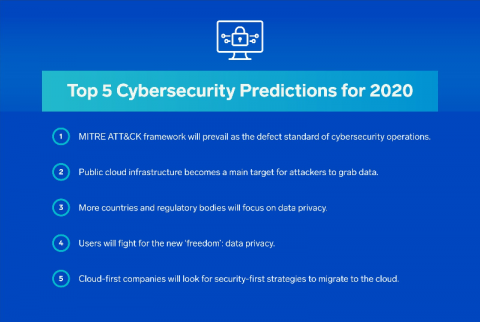Security | Threat Detection | Cyberattacks | DevSecOps | Compliance
%term
The Top 10 State of Security Blog Posts from 2019
It’s been another fantastic year on The State of Security blog. With over 350 blogs published from all walks of the security community, we like to think of the blog as more of an industry resource that caters to not only experienced security professionals but also to those who are new to the community. To finish the year off, I wanted to look back on some of my personal favorites. I’ve tried to include a mixture of different styles, topics and authors.
What is ITIL Incident Management Process Flow?
Proper functioning of IT service operations is necessary for business continuity. No sooner your service operations break down such as slowing down of the Email server than your entire business operations can be put on the verge of destruction.
AWS vs. Azure vs. Google - What's the Difference from a Cloud Security Standpoint?
When mainstream cloud computing first began to appear on the horizon, (Amazon launched its Elastic Compute Cloud product in 2006.) many organizations were initially hesitant to entrust their most valuable data and processes to a technological innovation named after something that appears so delicate. Oh, how times have changed.
Honeypots: A Guide To Increasing Security
Honeypots are not a new idea. They have been part of the cybersecurity world for decades and have frequently gone in and out of “fashion” over that period. Recently, though, they have become an increasingly important part of vulnerability management. That’s for a couple of reasons. Honeypots offer real-world data on the types of threats that companies face, and they can be a powerful research tool in identifying specific threat vectors.
TikTok Lawsuits Show The Need For Increased Scrutiny of Apps
TikTok, the popular video posting app, has come under increased scrutiny. Recently, two lawsuits filed against the platform accused TikTok of privacy violations. According to a report from Reuters, a plaintiff accused TikTok of creating an account without her knowledge or consent in one lawsuit filed in California. The lawsuit accused TikTok of creating a file on the user. This file allegedly included biometric data based on videos that the user created, but did not upload.
Use Cases for Threat Hunting
For a very long time, cyber security measures had defensive features that aimed to build an impenetrable wall around your assets. Threat hunting practices shift this defensive approach to an offensive one. In this article, we discussed threat hunting and its use cases in great detail.
Start the Year Right with a Security and Privacy Check Up
At some point in the past, I began making new year’s resolutions for doing a bit of personal privacy and security maintenance on New Year’s Day or thereabouts. I would usually have a bit of downtime to finally get around to doing the things I’d been putting off all year. It’s become a fun habit that I wanted to share.
How Much Does It Cost to Become PCI Compliant?
How much does it cost to become compliant with the Payment Card Industry Data Security Standard (PCI DSS)? It is challenging to put a number or an actual figure of becoming PCI compliant. The reason exact dollar amounts become a problem to predict is it depends on the size of the organization, whether they are eligible for the PCI Self Assessment Questionnaire (PCI SAQ), and the way they handle and store customer information.






